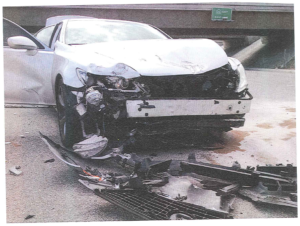Insurance companies must act fairly and in good faith—but that doesn’t mean they always will. Attorneys like us can recognize when they don’t, and we will challenge them when they breach the covenant of acting in good faith. In one of our cases, a client was simply trying to get paid by an insurance company after an accident. At the time, they did not have an attorney. Because they did not have legal counsel, the insurance company began delaying by asking our future client for unnecessary documents.
The client did not know any better, and they spent over a year going back and forth with the insurance provider. The “trick” here is where the insurance company delays and wears the victim down by asking for more information and documents than they need. The hope is that the victim will return and accept the original, albeit very low, offer to be done with the ordeal.
How do we know it was low? Because after we got involved with the case, we got ten times the amount they initially offered. Why? Because we knew what an appropriate settlement would look like, and we could also say no to specific requests. We know when someone is delaying, and we will likely have a strong sense of why they are doing it.
A Typical Scenario
Think about the following: Two drivers travel separately. Driver ONE is traveling east to west, and Driver TWO is moving north to south. It’s a sunny day, and the roads are clear. As they approach an intersection, the traffic light turns yellow. Driver ONE determines that they aren’t going to make the light and decides to stop. It’s a situation that any driver has been in as they get close to an intersection where the light changes. It’s a basic judgment that many people make daily. Driver ONE waits for the light to turn green.
Driver TWO still heads towards the intersection where Driver ONE is waiting. Driver TWO gets a yellow light but thinks they can make it through the intersection before the light turns. To do so, they accelerate. Both drivers experienced the same things minutes apart but reacted differently. Driver TWO misjudged the distance and ultimately ran a red light. Driver ONE gets a green light and goes through the intersection. Driver TWO collides with the passenger side of Driver ONE’s car (i.e., a “t-bone”).
What Happens Next
Though the scenario outlined above is fictitious, our firm has handled personal injury cases resulting from car accidents. Imagine that we represented Driver ONE, who obeyed the traffic laws, proceeded through an intersection when the light was green, and ultimately suffered significantly because of Driver TWO’s decisions. As bad as this scenario is, it can get worse—which it has in cases we have handled.
After the car accident, the victim turns to the other driver’s insurance company to compensate them for their injuries and the damage to their car. We discovered that the at-fault driver had the minimum insurance in this scenario. California has the 15/30/5 rule.
- $15,000 for injuries/death to one person
- $30,000 for injury/death to more than one person
- $5,000 for property damage
There are many cases where a driver has mandatory coverage, but the damages and costs exceed the abovementioned amounts. In other words, the driver was underinsured. To make matters worse, we have encountered times when the insurance company doesn’t want to cooperate. They even “lowball” us by offering us less than the case is worth. Insurance companies then don’t return phone calls or respond to letters. They make up excuses for the low offer, ask for records they don’t need, act in bad faith, and force us to file the lawsuit. Meanwhile, an injured driver has medical bills and has to deal with extensive damage to a car they rely heavily on.
Don’t Get Frustrated
Knowing insurance bad faith law and how to use it when negotiating with the insurance company is critical to our success. We have processes and procedures that document the insurance companies’ bad faith. We can then use that evidence to pressure the insurance company to do the right thing—because if they don’t, we will pursue a bad faith lawsuit and ask for money damages that could include attorney fees and money to punish the insurance company for its behavior.
Our client ultimately got ten times over the insurance company’s offer. Although they were likely frustrated by the insurance company’s calculated responses, they knew we were collecting evidence of their bad faith, including delay tactics and low offers. Howell LLP works to obtain the proper settlement instead of the easy one. If you are battling an insurance company, contact our office to schedule a free consultation to learn how we can assist you.



